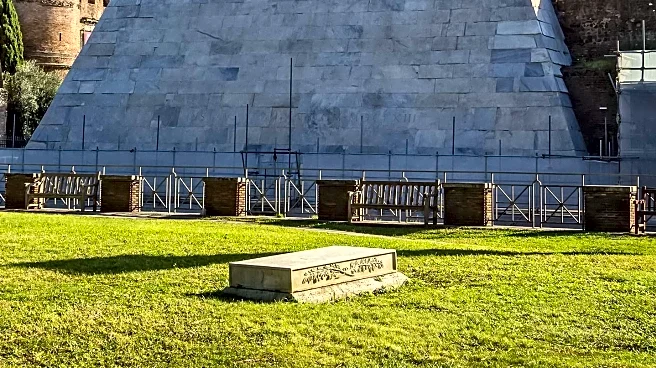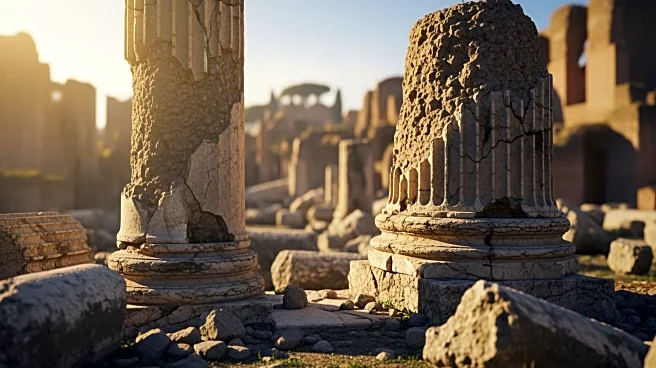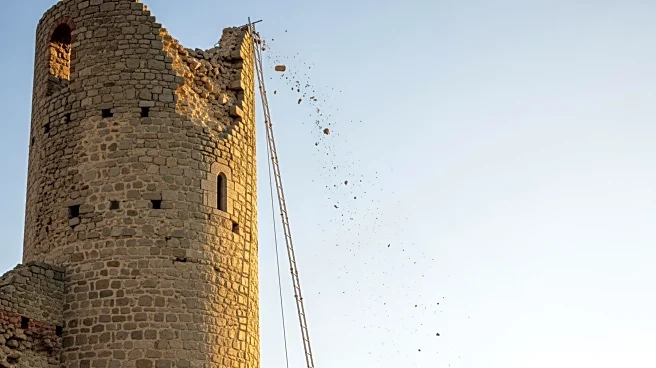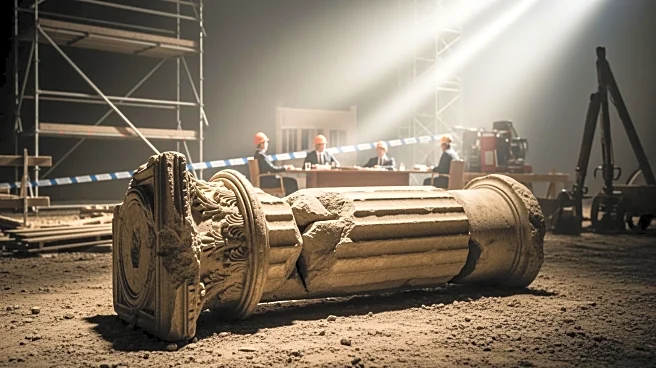What's Happening?
A section of the medieval Torre dei Conti in Rome collapsed during renovation work, trapping one worker under rubble while four others were rescued. The tower, built in 1238 and located near the Colosseum, was undergoing restoration funded by Italy's
National Recovery and Resilience Plan. The collapse prompted emergency response teams to evacuate workers and close nearby streets. The incident occurred in a heavily visited area, raising concerns about structural safety and the impact on Rome's historic sites.
Why It's Important?
The collapse of the Torre dei Conti highlights the challenges of preserving historical structures while ensuring safety during renovations. The incident underscores the importance of rigorous safety protocols and assessments in restoration projects, especially in areas with high tourist traffic. The involvement of Italian authorities and the opening of an investigation into negligent assault reflect the seriousness of the situation and the need for accountability in construction practices. The preservation of Rome's cultural heritage is crucial for tourism and the city's historical identity.
What's Next?
Authorities are conducting investigations into the cause of the collapse, focusing on construction work status and contract awarding processes. The prosecutor's office has opened an investigation into negligent assault, with experts assessing the situation. The incident may lead to stricter regulations and oversight in restoration projects, particularly in historic areas. The ongoing rescue operations and structural assessments will determine the next steps in addressing the damage and ensuring safety.
Beyond the Headlines
The collapse raises broader questions about the balance between preserving historical sites and modern urban development. It highlights the ethical considerations in maintaining cultural heritage while ensuring public safety. The incident may prompt discussions on funding and resource allocation for restoration projects, as well as the role of government and private entities in safeguarding historical landmarks.













